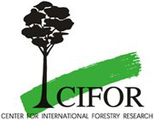The "Forests of the Congo Basin: State of the Forest 2010" report, developed by the Center for International Forestry Research (CIFOR), the Central African Forest Commission (COMIFAC), and other partners, examines the role of the informal logging sector in depth and provides new evidence of its role as a driver of deforestation in the Congo Basin.
 20 March 2012: The “Forests of the Congo Basin: State of the Forest 2010” report, developed by the Center for International Forestry Research (CIFOR), the Central African Forest Commission (COMIFAC) and other partners, highlights the drivers of deforestation that have contributed to a doubling of gross deforestation rates in the Congo Basin since 1990.
20 March 2012: The “Forests of the Congo Basin: State of the Forest 2010” report, developed by the Center for International Forestry Research (CIFOR), the Central African Forest Commission (COMIFAC) and other partners, highlights the drivers of deforestation that have contributed to a doubling of gross deforestation rates in the Congo Basin since 1990.
With estimates of 0.26% per year from 2000-2005, the report, which covers six countries of the Congo Basin, finds that the highest deforestation rates were experienced in the Democratic Republic of Congo, Cameroon and the Republic of Congo. The drivers of deforestation identified in the report include: fuel wood extraction; agriculture; mining and oil extraction; biofuel expansion; and logging.
Noting the critical role of forest cover change estimates in UN REDD+ negotiations, the report aims to inform Central African policy makers. It raises concerns regarding the impact of the informal lumber sector and the relatively little attention paid to the timber volumes and social dynamics behind the informal timber sector.
The report is the third in a bi-annual series of reports on the Congo Basin forest region, and the first in the series to base estimates on satellite images. CIFOR is a member of the Consultative Group on International Agricultural Research (CGIAR). [CIFOR Press Release] [Publication: Forests of the Congo Basin – State of Forests 2010]